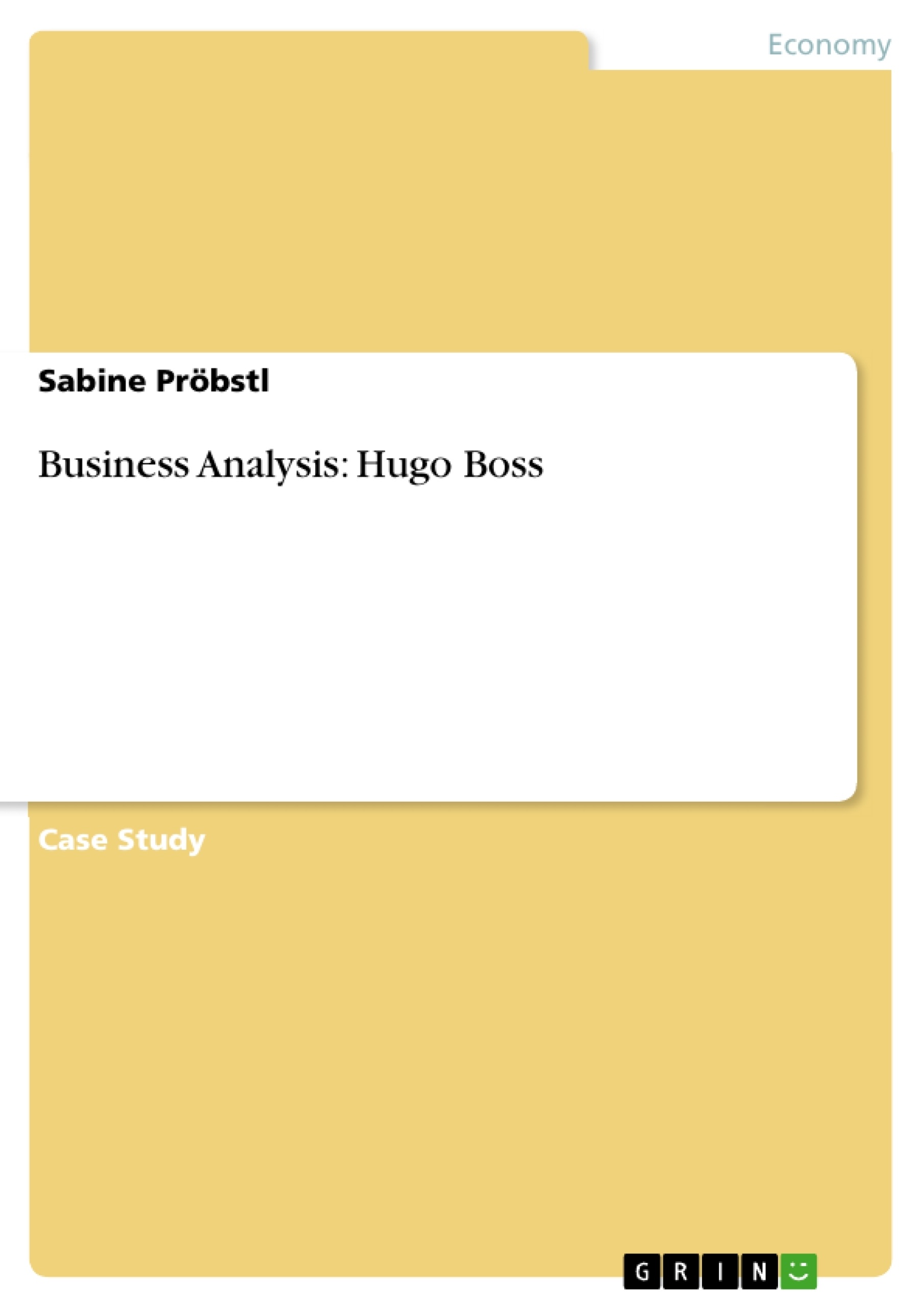The founder, Hugo Ferdinand Boss (born 1885 died August 1948), opened his first factory in 1924. At the beginning he had approximately 20-30 employees. After the World-Economy-Crisis in 1929 Hugo Boss couldn’tavoid insolvency anymore butwas able to recover thanks to the production of military uniforms for the NSDAP. Until 1942 the turnover rose increasingly and reached finally the one million mark.
Table of Contents
- History of the firm
- Company Description
- Facts and Figures
- Core Competencies
- History of the industry (Porter's 5 Forces Model)
- SWOT Analysis
- Corporate Strategy of Hugo Boss
- The Project D.R.I.V.E.
- Financial Analysis
- BCG Model
- Team recommendation- "buy", "sell" or "hold"
Objectives and Key Themes
This analysis aims to provide a comprehensive overview of Hugo Boss AG, a leading fashion company. It examines the company's history, key facts and figures, core competencies, and strategic direction. The analysis also investigates the industry environment using Porter's Five Forces Model and conducts a SWOT analysis to identify strengths, weaknesses, opportunities, and threats.
- History and Evolution of Hugo Boss
- Company Structure and Core Competencies
- Brand Strategy and Portfolio
- Financial Performance and Market Position
- Strategic Direction and Future Prospects
Chapter Summaries
History of the firm
This chapter traces the history of Hugo Boss AG from its founding in 1924 by Hugo Ferdinand Boss. It discusses the company's growth, its involvement in the production of military uniforms during World War II, and its subsequent transition to a leading fashion brand. The chapter highlights key milestones in the company's development, such as the introduction of the Boss brand, the launch of fragrances, and the expansion into new product categories and markets.
Company Description
This chapter provides a detailed description of Hugo Boss AG, covering key facts and figures, its organizational structure, and its core competencies. It outlines the company's global presence, its business segments (menswear and women's wear), and its brand portfolio, which includes BOSS Black, BOSS Selection, BOSS Orange, BOSS Green, and HUGO.
Keywords
The key terms and concepts explored in this analysis include Hugo Boss AG, fashion industry, brand strategy, financial analysis, Porter's Five Forces Model, SWOT analysis, corporate strategy, BCG Model, and team recommendation. The analysis focuses on the company's history, its core competencies, its financial performance, and its strategic direction.
- Citar trabajo
- Sabine Pröbstl (Autor), 2012, Business Analysis: Hugo Boss, Múnich, GRIN Verlag, https://www.grin.com/document/201379




